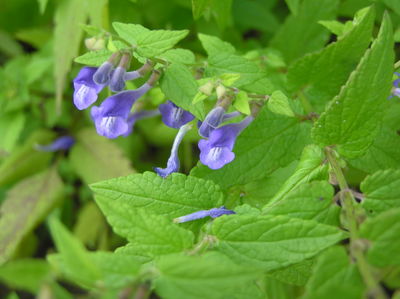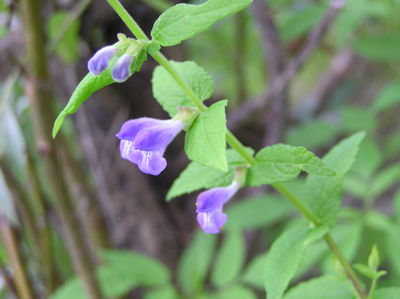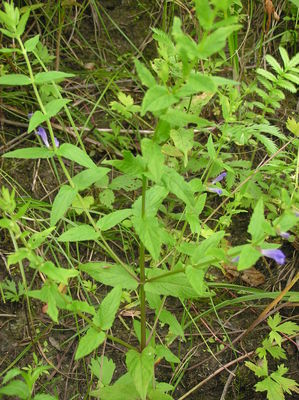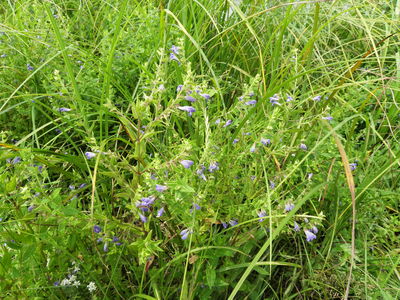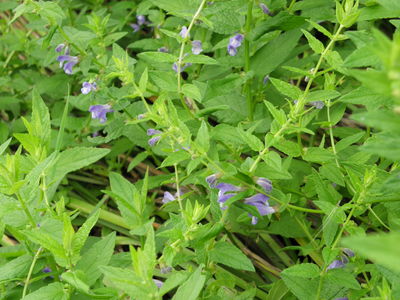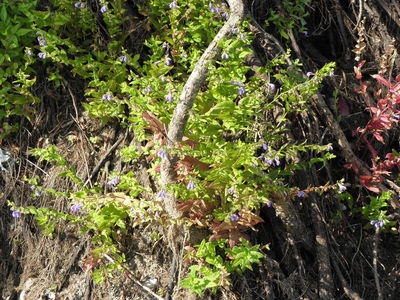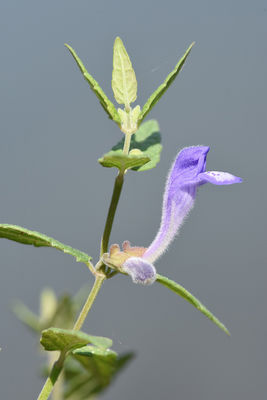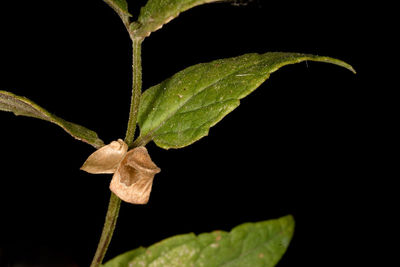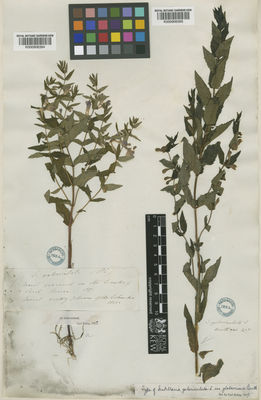Geography and distribution
Scutellaria galericulata is widespread in the temperate Northern Hemisphere.
Description
Skullcap is a non-aromatic herb, 0.1-0.7 m tall. Its leaves are borne opposite each other on the stem, and are 10-50 mm long, 3-20 mm wide. The leaves have a weakly toothed margin, and an acute apex (pointed tip). The inflorescence is terminal, with single flowers in the axils of leaf-like bracts. The calyx has two entire lips; an upper lip with a sail-like scutellum, which acts as a lever to remove the upper lip when the nutlets (dry, one-seeded fruits) are mature; a shovel-like lower lip, which catapults the nutlets free once the upper lip is removed. The corolla is blue to bluish-purple and 10-18 mm long. Each flower has four stamens (male parts). The nutlets are brown, tuberculate (covered with wart-like outgrowths), and float on water during dispersal.
Threats and conservation
Scutellaria galericulata is not considered to be threatened.
Uses
Scutellaria galericulata can be grown as an ornamental. It has also been used in traditional medicine (mainly as a substitute for the North American species S. lateriflora ) which is used traditionally for the treatment of various nervous disorders. Scutellaria galericulata has potential use in the development of environmentally-friendly pest control agents
Millennium Seed Bank: Seed storage
Kew's Millennium Seed Bank Partnership aims to save plant life world wide, focusing on plants under threat and those of most use in the future. Seeds are dried, packaged and stored at a sub-zero temperature in our seed bank vault.
Description of seeds: 1,000 seed weight = 0.75 g
Number of seed collections stored in the Millennium Seed Bank: One
Seed storage behaviour: Orthodox (the seeds of this plant survive being dried without significantly reducing their viability, and are therefore amenable to long-term frozen storage such as at the MSB)
Germination testing: 85% germination achieved with: germination medium = 1% agar with 250 mg/l gibberellic acid (GA3); germination conditions = 21ºC, 12/12.
Cultivation
At Kew, skullcap is grown outdoors in a raised bed filled with sandy soil. It thrives in full sun and does not need any extra feed or mulch. It has survived snow and severe frost with no protection. It has suffered from infestations of parasitic dodder ( Cuscuta europaea ). Attempts to take parasite-free cuttings have failed, and so Kew staff plan to grow skullcap from seed to ensure they obtain dodder-free plants.
Skullcap at Kew
Skullcap can be seen growing in the Plant Family Beds at Kew, along with other members of the Lamiaceae (mint) family. The skullcap growing here is visited each year by a bright yellow sawfly. It is thought that the sawfly may utilise the chemicals in the leaf material for its own defence mechanisms.
A dried specimen of the related species Scutellaria paucifolia was found in a notebook belonging to the Scottish explorer David Livingstone, and the specimen details can be seen online in the Herbarium Catalogue. This specimen was collected in 1861 on Livingstone's Zambesi Expedition.
Biological reactions - research at Kew
Chemotaxonomic studies of members of the Lamiaceae (mint family) have helped in the isolation of a range of terpenoids that may be developed as environmentally-friendly pest control agents. For example, there are terpenoids in bugle ( Ajuga reptans ) and skullcap ( Scutellaria galericulata ) that inhibit feeding in economically important insects, such as the African army worm and desert locust.
Some promising compounds are very complex, and difficult to synthesise, so scientists look for simpler, related compounds with similar activity. The neem tree ( Azadirachta indica ), contains the complex compound azadirachtin which has anti-insect activity. Kew scientists, along with those from Birkbeck College and Cambridge University, have characterised functional groups (parts) of this molecule thought to be responsible for its potent anti-feedant and growth disruption activity. Plants with simpler compounds having the same active groups are being sought.


